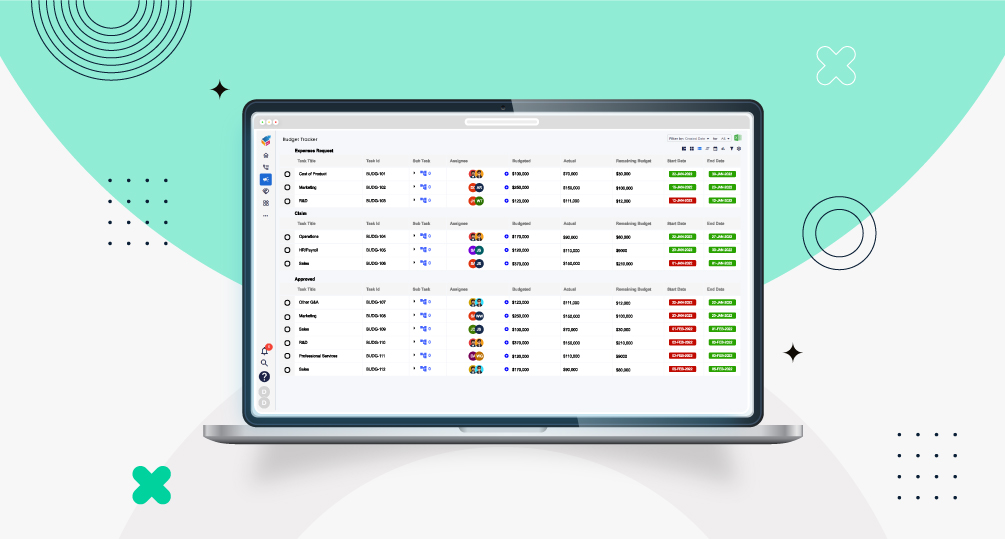Table of Contents
Creating a sales budget may seem daunting, but it doesn’t have to be. This article explores what a sales budget is, why it’s crucial, and how you can prepare one with ease.
What is a Sales Budget?
A sales budget is a monthly or quarterly forecast of a company’s expected sales revenue, in both dollar and unit terms, for a specific budgeting period. It is based on input from different departments regarding product knowledge and future expectations. For instance, the marketing department might provide information on upcoming holiday promotions that could boost sales. Product managers might highlight the impact of an upcoming new product release on sales. Creating a sales budget involves collaboration and communication across departments.
Objective of Sales Budgeting
The primary goal of a sales budget is to establish sales expectations for a period, optimizing resources to maximize a company’s profit. It serves as a planning tool, enabling departments to anticipate what to expect and coordinate resources effectively. Sales budgets also provide sales teams with a target to work towards, with exceeding the budget being a favorable outcome. However, creating a sales budget involves more than just setting low expectations to ensure success.
Components of a Sales Budget
Sales budgets are typically prepared using spreadsheets, and it’s important to choose one that suits your needs. An overly simplistic spreadsheet might overlook important factors, while one that is too complex can be overwhelming. Your sales budget should include the following elements:
- Income Statement: This report shows the net income, indicating the company’s operational effectiveness. It is calculated as Net Income = (Revenue + Gains) – (Expenses + Losses).
- Balance Sheet: This report presents a company’s assets, liabilities, and shareholders’ equity for a specific budgeting period.
- Cash Flow Statement: This statement details the cash inflows and outflows during the period.
These components are essential for creating and maintaining your sales budget. Using templates that fit your needs can provide valuable insights during this process.
How to Prepare a Sales Budget
Preparing a sales budget involves several steps to ensure accuracy and effectiveness. Here’s a step-by-step guide:
- Choose a Budget Period: Decide on a monthly or quarterly budget period for more detailed insights than an annual budget.
- Catalog Products and Prices: List all current products and their prices. Note any upcoming new products or price changes.
- Review Historical Sales Data: Analyze past sales data for the same period to set expectations and identify trends.
- Benchmark Against Industry Standards: Compare your data with industry benchmarks to understand your performance in context.
- Consider Market Trends: Evaluate current and past market trends to align your expectations with industry realities.
- Account for Sales Team Size: Ensure your budget aligns with the capacity of your sales team to execute the plan.
- Consult Sales Representatives: Gain insights from your sales team, as they interact directly with customers and understand market dynamics.
- Engage with Customers: Interact with customers to understand their expectations and potential future purchases.
- Evaluate Sales Prospects: Assess the conversion rate of prospective customers to adjust your expectations accordingly.
- Develop and Review the Budget: Use the gathered insights to create your sales budget. Continuously review and adjust it as needed throughout the budget period.
Following these steps will help you create a comprehensive sales budget that aligns with your business goals and market conditions.
Sales Budget Template - Try YoroCRM
Creating a sales budget can be a complex task, requiring careful consideration of various factors such as historical sales data, market trends, and sales team capacity. However, with YoroCRM sales budget template, the process becomes much simpler and more efficient.

YoroCRM‘s sales budget template is designed to help you set realistic sales targets and track your progress towards them. The template allows you to input your sales targets for each product or service, along with their respective prices. You can also input historical sales data to help you forecast future sales more accurately.
One of the key features of YoroCRM‘s sales budget template is its flexibility. You can easily adjust your sales targets based on changing market conditions or other factors. The template also allows you to track your actual sales against your budgeted sales, giving you valuable insights into your sales performance.
Another advantage of using YoroCRM‘s sales budget template is its integration with other Yoro applications. For example, you can seamlessly transfer data between YoroCRM and Yorodocs to ensure that your budget is always up-to-date and accurate. You can also use YoroCRM’s customization feature to create detailed reports and dashboards to track your sales performance.
In conclusion, YoroCRM‘s sales budget template is a powerful tool that can help you streamline your sales planning process and make more informed decisions. Try it today and see the difference it can make to your business.




